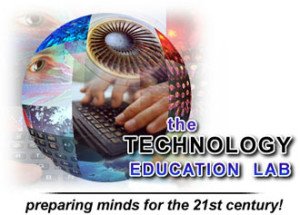Articles
It’s P.Q. And C.Q. as Much as I.Q.
NY Times: January 29, 2013
President Obama’s first term was absorbed by dealing with the Great Recession. I hope that in his second term he’ll be able to devote more attention to the Great Inflection.
Dealing with the Great Recession was largely about “Yes We Can” — about government, about what we can and must do “together” to shore up the safety nets and institutions that undergird our society and economy. Obama’s Inaugural Address was a full-throated defense of that “public” side of the unique public-private partnership that makes America great. But, if we’re to sustain the kind of public institutions and safety nets that we’re used to, it will require a lot more growth by the private side (not just more taxes), a lot more entrepreneurship, a lot more start-ups and a lot more individual risk-taking — things the president rarely speaks about. And it will all have to happen in the context of the Great Inflection.
individual risk-taking — things the president rarely speaks about. And it will all have to happen in the context of the Great Inflection.
What do I mean by the Great Inflection? I mean something very big happened in the last decade. The world went from connected to hyper-connected in a way that is impacting every job, industry and school, but was largely disguised by post-9/11 and the Great Recession. In 2004, I wrote a book, called “The World Is Flat,” about how the world was getting digitally connected so more people could compete, connect and collaborate from anywhere. When I wrote that book, Facebook, Twitter, cloud computing, LinkedIn, 4G wireless, ultra-high-speed bandwidth, big data, Skype, system-on-a-chip (SOC) circuits, iPhones, iPods, iPads and cellphone apps didn’t exist, or were in their infancy.
Today, not only do all these things exist, but, in combination, they’ve taken us from connected to hyper-connected. Now, notes Craig Mundie, one of Microsoft’s top technologists, not just elites, but virtually everyone everywhere has, or will have soon, access to a hand-held computer/cellphone, which can be activated by voice or touch, connected via the cloud to infinite applications and storage, so they can work, invent, entertain, collaborate and learn for less money than ever before. Alas, though, every boss now also has cheaper, easier, faster access to more above-average software, automation, robotics, cheap labor and cheap genius than ever before. That means the old average is over. Everyone who wants a job now must demonstrate how they can add value better than the new alternatives.
When the world gets this hyper-connected, adds Mundie, the speed with which every job and industry changes also goes into hyper-mode. “In the old days,” he said, “it was assumed that your educational foundation would last your whole lifetime. That is no longer true.” Because of the way every industry — from health care to manufacturing to education — is now being transformed by cheap, fast, connected computing power, the skill required for every decent job is rising as is the necessity of lifelong learning. More and more things you know and tools you use “are being made obsolete faster,” added Mundie. It’s as if every aspect of our lives is now being driven by Moore’s Law. This is exacerbating our unemployment problem.
In their terrific book, “Race Against the Machine: How the Digital Revolution Is Accelerating Innovation, Driving Productivity, and Irreversibly Transforming Employment and the Economy,” Erik Brynjolfsson and Andrew McAfee of the Massachusetts Institute of Technology note that for the last two centuries it happened that productivity, median income and employment all tracked each other nicely. “So most economists have had this feeling that if you just boost productivity, the pie grows, and, in the long run, everything else takes care of itself,” explained Brynjolfsson in an interview.
 “But there is no economic law that says technological progress has to benefit everyone. It’s entirely possible for the pie to get bigger and some people to get a smaller slice.” Indeed, when the digital revolution gets so cheap, fast, connected and ubiquitous you see this in three ways, Brynjolfsson added: those with more education start to earn much more than those without it, those with the capital to buy and operate machines earn much more than those who can just offer their labor, and those with superstar skills, who can reach global markets, earn much more than those with just slightly less talent.
“But there is no economic law that says technological progress has to benefit everyone. It’s entirely possible for the pie to get bigger and some people to get a smaller slice.” Indeed, when the digital revolution gets so cheap, fast, connected and ubiquitous you see this in three ways, Brynjolfsson added: those with more education start to earn much more than those without it, those with the capital to buy and operate machines earn much more than those who can just offer their labor, and those with superstar skills, who can reach global markets, earn much more than those with just slightly less talent.
Put it all together, he added, and you can understand, why the Great Recession took the biggest bite out of employment but is not the only thing affecting job loss today: why we have record productivity, wealth and innovation, yet median incomes are falling, inequality is rising and high unemployment remains persistent.
How to adapt? It will require more individual initiative. We know that it will be vital to have more of the “right” education than less, that you will need to develop skills that are complementary to technology rather than ones that can be easily replaced by it and that we need everyone to be innovating new products and services to employ the people who are being liberated from routine work by automation and software. The winners won’t just be those with more I.Q. It will also be those with more P.Q. (passion quotient) and C.Q. (curiosity quotient) to leverage all the new digital tools to not just find a job, but to invent one or reinvent one, and to not just learn but to relearn for a lifetime. Government can and must help, but the president needs to explain that this won’t just be an era of “Yes We Can.” It will also be an era of “Yes You Can” and “Yes You Must.”
PUBLIC SCHOOLS DO EDUCATE
From an Op-ed in the Press Democrat, Santa Rosa, California 12/24/12
Public schools do educate the whole child. My daughter attends Rancho Cotati High, which reaches beyond meeting state requirements. She chooses from a selection of rigorous college-prep and advance placement classes and creates her own science, gym and elective curriculum. Public school has given her an opportunity to perform on stage, sing, compete in speech and debate, learn how to draw microorganisms and speak a second language. She belongs to clubs that teach leadership and community involvement and has seen how to win, and lose gracefully. Rancho values services and requires 40 hours of volunteer work to graduate, although many students earn more.
draw microorganisms and speak a second language. She belongs to clubs that teach leadership and community involvement and has seen how to win, and lose gracefully. Rancho values services and requires 40 hours of volunteer work to graduate, although many students earn more.
Teachers do care. They run clubs, coach, attend school functions and are always available for extra support. Rancho is also teaching my child how to live respectfully in a multicultural world. Public schools teach everyone, and all students know, regardless of their circumstances, they can succeed. Programs such as AVID support this view. The Waldorf method is a successful model. But I am proud to say that Rancho Cotati, a public high school, is a positive influence on my daughter – also an outstanding teen.

Recent Comments